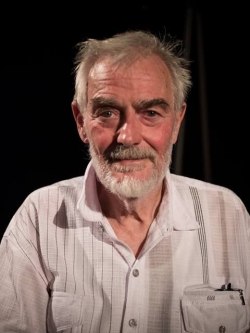How to Make Glass? (Manually)
Glass: a symbol of wealth in decorative palaces; placed inside window frames, it offers protection from the outer elements; inside the home, it becomes a utilitarian object. How are these objects made, and what happens to the glass? Hur gör man glas? is one episode in Péter and Zsóka Nestler's educational television series on the production, processing, and meaning of different materials. Nestler's vision of society and history is archaeological at its core: an examination of our culture through objects, starting from the cause and method of production, to the objects’ usage and symbolic meaning.
Each and every aspect of glass is looked at through the phases of production: blowing and molding become an amazing aesthetic experience, despite the conditions: the unbearable heat of the glass factory and the dust in the air that triggers respiratory distress. All the same, the workers’ subtle and precise gestures bear no resemblance to factory work, but rather show craftsmanship at its best.
Peter Nestler (b.1937) is one of the most singular and important filmmakers to emerge in postwar Germany. In the early 1960s Nestler made a series of poetic films about the changing realities in rural and industrial areas and about the working class communities, mostly in Germany, but also in the UK, where he filmed A Working Men's Club in Sheffield (1965). In the same year he directed From Greece (1965), on the rise of and struggle against fascism followed by the unsparing and exigent In the Ruhr Area (1967). Opposition to his political views and film aesthetics led Nestler to Sweden, where he worked mostly for television. Since the 1970s, Nestler has directed an extraordinary body of work further expanding the form and themes of his first films, including history, the working class, anti-fascism, the history of labour and production, and immigration. In the past 20 years, Nestler's films have continued to focus on change, remembrance and preservation, as exemplified by The North Calotte (1991), a remarkable travelogue tracing the harmful effects of industrialisation on the Sami communities and the landscape of Northern Europe.
(Source: https://dafilms.com/)




